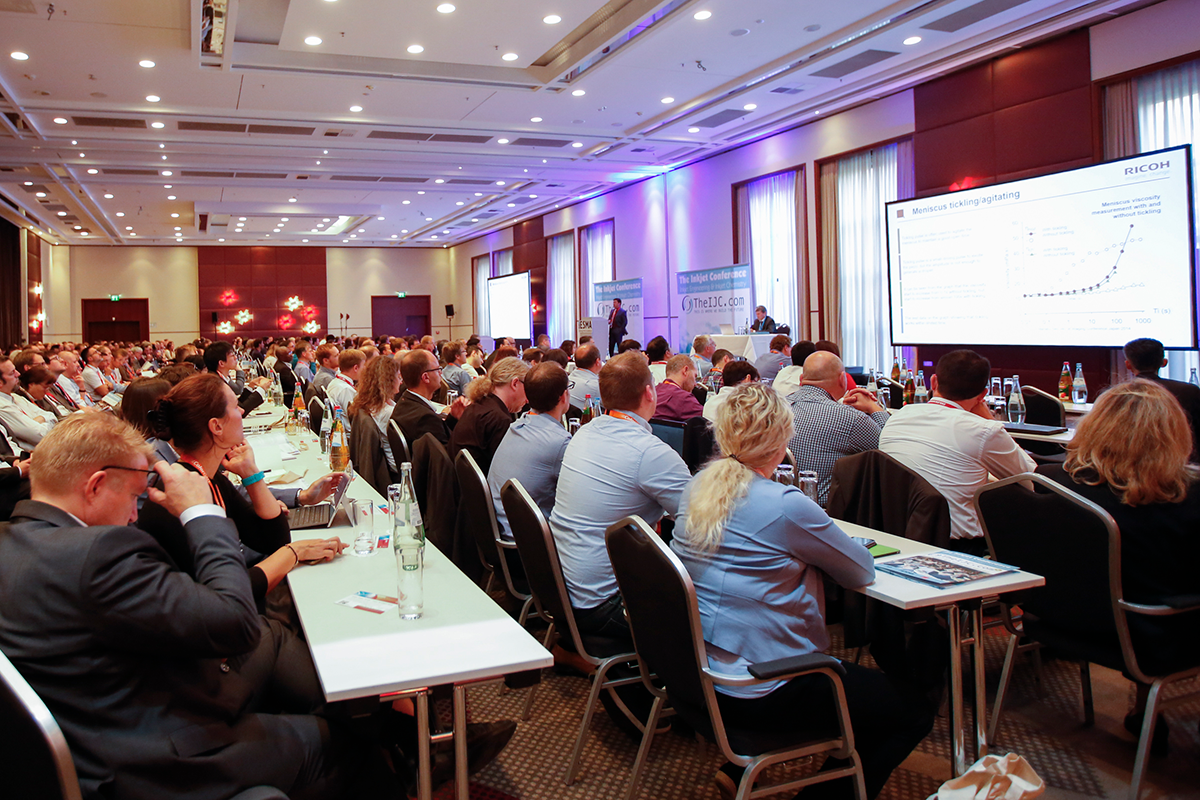Think you know all inkjet can do? Well, the annual Inkjet Conference, organised by the European Specialist Printing Manufacturers Association (ESMA), might challenge your perceptions.
The Inkjet Conference - or the TheIJC as it’s known - has one purpose: to provide insights and inspiration for any business impacted by digital inkjet. As additive manufacturing has so blatantly shown, inkjet is not only competitive as a printing method - it is being adopted as a manufacturing process and TheIJC sets out to discuss applications ranging from aeronautics, packaging, sportswear and design through to textiles, ceramics, laminates, printed electronics…and graphics. While praised for its technical content, the conference is not just a destination for techies, engineers and chemists. The most recent iteration comprised 61 presentations from all corners of the industry and research world, so it’s hardly surprising that it flagged up some issues and developments you may not be total conversant with, but perhaps should be if you want to keep a step ahead of the rest. Take ColorGate’s new 3D Surface Creator for instance.
You likely know that for a growing number of customers, when it comes to surface imitation photo-realistic flat prints no longer cut it. Looking like the real thing is no longer good enough - it has to feel like it too. It’s that haptic effect clients are after.
CEO of German-based ColorGate, Thomas Kirschner, pointed out at TheIJC 2018 that its 3D Surface Creator allows you to provide just that. It captures natural surfaces - such as weathered wood or leather - including colour, glossiness and depth information. It can scan templates of up to 49 x 85cm, with several shots taken with different illuminations. All surface characteristics are digitalised, visualised, manipulated, evaluated and reproduced at one workstation. The same ‘materials’ can then be replicated at different production sites under different conditions. Neat.
And how about jetting fluids to save the planet? Renewable energy is much talked about but still relatively expensive and far from balancing out the traditional fossil sources. Inkjet-printed solar cells based on halide perovskites can be s game changer - ‘Science’ magazine listed them among the top ten scientific breakthroughs in 2013 and since then the technology has been gaining ground.
One of the newcomers to TheIJC, a Polish start-up called Saule Technologies, presented how perovskites - already on par with silicon cells in terms of efficiency - can be solved and deposited on random surfaces, including clothing, paper or even building walls.
Inkjet printing enables designing of freeform perovskite solar modules, as the shapes and areas covered by each layer can be all tailored according to the requirements. Currently, Saule is collaborating with the construction giant Skanska on an office building project where semi-transparent and opaque perovskite solar modules will be integrated in windows and facades, so could you be involved in creating electricity generating walls and windows, even clothes covered in inkjet-printed photovoltaic layers? It’s a thought.
And what about edible inkjet? Printing inks onto foodstuffs or pharmaceuticals such as capsules and tablets has been established for some time to allow traceability in the supply chain and date coding to be done on the fly. This has been dominated by continuous inkjet printing e.g. date coding of eggs and marking pills with a logo.
But the trend towards personalisation is also tickling tastebuds. Swiss-based Sensient Imaging Technologies has introduced a water-based edible ink called SensiJet FSE, which can be used for personalising confectionary, baked goods and other food items.
With plenty of inkjet development to come, keep your eyes and ears open for more on TheIJC 2019, which will take place on 22-23 May 2019 in Chicago and on 29-30 October 2019 in Dusseldorf.


